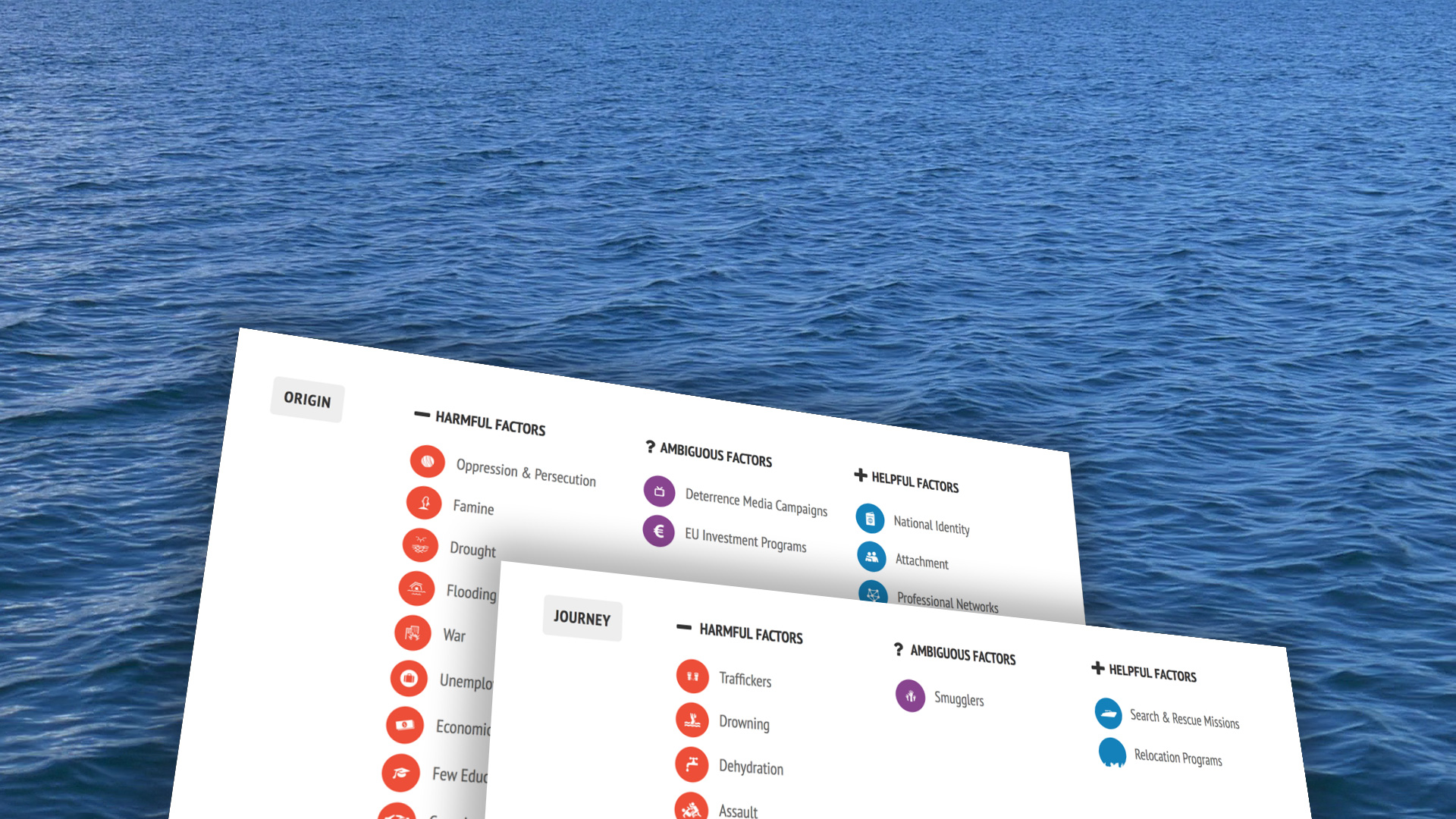Perilous Journeys
Exploring the Real Factors of Migration

Perilous Journeys
Exploring the Real Factors of Migration
Imagine if your home became unlivable. If your government targeted you because of your beliefs. If war broke out and your neighborhood were caught in the crossfire. If severe droughts threatened your ability to feed your family. Would you stay put and hope for better times? Or risk everything for an uncertain future in a foreign land?
These are the impossible choices faced by thousands of people in Africa and the Middle East every day. Should they remain in their home countries and face certain persecution, or embark on an unpredictable trek that may take their lives? Should they keep their families together, even in a war zone, or split up and risk never seeing one another again?
The stakes couldn’t be higher. Last year, more than 5,000 people died crossing the Mediterranean. That was an increase of 1,300 from 2015, despite fewer people crossing. Shifts in travel routes have made the journey across the Mediterranean from Africa to Europe far more treacherous — the odds of dying have spiked from 1 in 265 to 1 in 73. Overall, about 360,000 people successfully crossed the Mediterranean last year.
BEYOND “PUSH” AND “PULL”
For someone who lives far from this crisis, it can be hard to comprehend how people become migrants and refugees. Thinking of decisions to leave home in terms of “push” and “pull” factors can help. “Push” factors are negative forces at home that make people want to leave. “Pull” factors are positive factors in another country that entice people to travel there.
These variables shape the life-and-death decisions would-be migrants make, but they don’t tell the whole story. Too often, they oversimplify the complex decisions that transpire when hope for a better future mixes with desperation in the present. Leaving home requires people to give up professional networks, familial bonds, a familiar language and much more. And arriving in Europe often means grappling with discrimination, economic hardship and detention.
WHAT WOULD YOU DO?
This project puts you in the shoes of a potential migrant to answer an important question: what would I do? The goal of the project is to show how overwhelming the decisions faced by migrants and refugees are and how many people are left with little to no good options. It will bring readers close to people’s lives and prompt them to be active participants.
There are 35 factors included that give a general understanding of what pushes a migrant to leave the African continent and the Middle East and what pulls them toward Europe. By answering the questions in this interactive format, we hope to offer a more nuanced understanding of why people are fleeing in such large numbers and what can be done to address the problems. Here is a link to begin the journey. We welcome your feedback.










